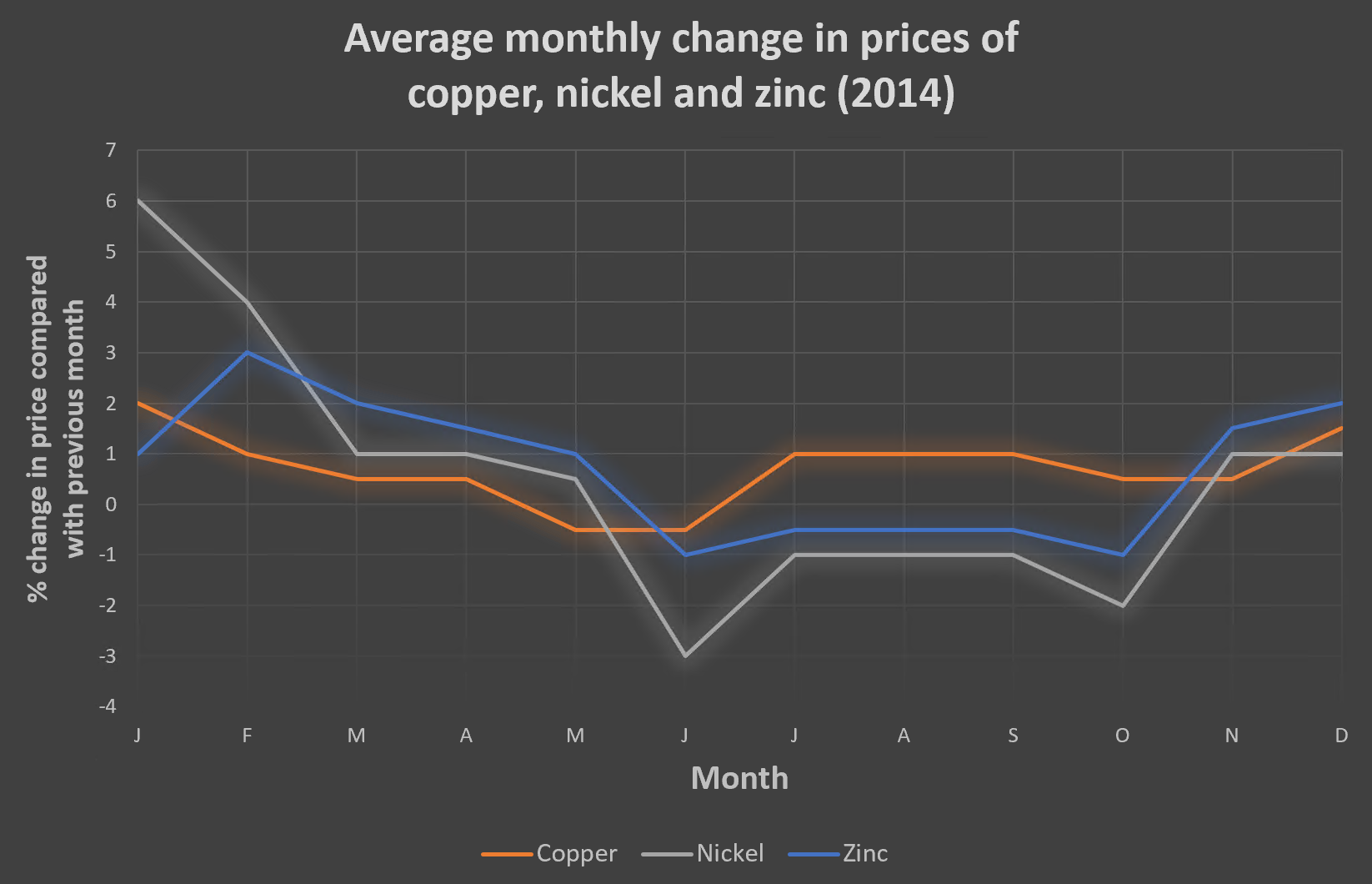IELTS Writing Task 1 #202
IELTS Writing Tip
As you do more practice of the different IELTS writing tasks, you will need less time to complete them. For the first practice attempt you should take longer for each stage (for example, 40 minutes for Task 1). In particular, give yourself plenty of time to look at the data and decide what to include in your answer before starting to write.
You should spend about 20 minutes on this task.
The graph below shows the average monthly change in the prices of three metals during 2014.
Summarise the information by selecting and reporting the main features and make comparisons where relevant.
Write at least 150 words.

Model answer
From the line graph, we can see the average monthly rise or fall in how much copper, nickel and zinc cost throughout 2014.
Overall, nickel started with the highest percentage change of the three but ended with the lowest. Zinc started with the smallest change and ended with the highest, and copper prices fluctuated. Prices for all three metals dipped in June.
In January the price of nickel was up tix per cent, but this dropped to negative three percent in June, ending the year with a one percent increase in both November and December. Copper began the year with an increase of two percent and by May, the price was dropping (by slightly less than one per cent). It rose again, increasing by a percentage point in July, August and September. Zinc saw its most dramatic increase in February, with three per cent and the price fell in June (a one percent decrease). The change, was negative until October/November when it began to rise.
(165 words)
EXAMINER’S EXPLANATION
This response reports the main data for each of the three metals. There is an introduction in the first paragraph and an overview in the second, followed by the presentation of the main trends of all three categories in the third. Some details are missing (copper after September and no percentage changes for any metal from July to September).
The candidate identifies the 'dip' for all three in June, but to score more highly, they could also have mentioned that overall, percentage changes fell at the beginning of the year, remained static from July to September and rose after October to the end of the year.
Information is arranged coherently; each metal is taken in turn for data reporting. There is good use of cohesive devices [Overall / but / with / when], but there could be more.
Vocabulary is adequate with some attempts to use less common items [fluctuated / dramatic increase] and attempts to use synonyms [ended with the lowest / dipped dropped].
There is a lack of complex structures, as most sentences are simple or compound. However, there is some variety in structures, including comparatives [highest / smallest / most dramatic] and continuous tenses [was dropping].
To improve the response, the candidate could extend the overview to reflect some common trends and should include some of the missing details.